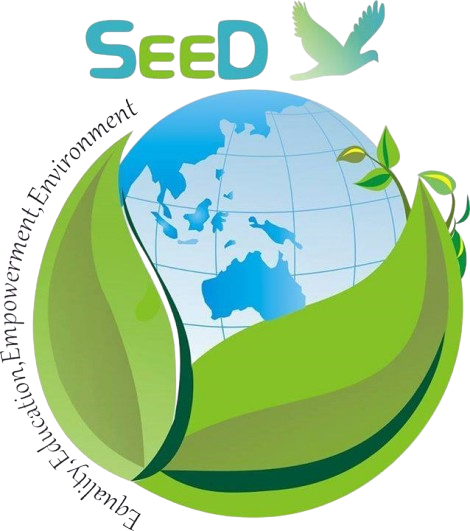






Objective:
To provide comprehensive emergency relief and rehabilitation to climate-vulnerable coastal communities during cyclones (Aila, Bulbul, Amphan, Yaas, Remal) and COVID-19 lockdowns, ensuring dignified survival and rapid recovery while building long-term resilience.
Overview:
SEED’s multi-hazard emergency response program is designed to confront the layered vulnerabilities of Sundarbans’ coastal communities, who live under the constant threat of cyclones, tidal surges, embankment breaches, and, more recently, pandemic-related crises. Operating across some of the most climate-exposed islands—such as Ghoramara, Mousuni, and Sagar—as well as vulnerable mainland coastal blocks, SEED has developed a comprehensive crisis response model that seamlessly integrates immediate relief, medium-term recovery, and long-term resilience building. The program acknowledges that climate change disproportionately affects already marginalized populations, and that emergencies often exacerbate existing inequalities. For this reason, targeted interventions are prioritized for women, tribal groups, children, and island dwellers who are at the frontline of displacement and livelihood disruption.
At the core of the program is the rapid deployment of relief aid within 12–48 hours of disaster onset. SEED’s frontline teams, drawn from local volunteers and community-based organizations, deliver essential rations, cooked food, clean drinking water, and emergency healthcare to families stranded in inundated areas. Temporary shelter materials such as tarpaulins and solar lighting kits restore a sense of dignity and safety during displacement. Recognizing the unique needs of women and adolescent girls, SEED incorporates gender-responsive programming, including distribution of sanitary kits and the establishment of safe spaces within cyclone shelters. Parallel to relief distribution, community health camps are organized in medically underserved islands, offering first aid, treatment for waterborne and skin infections, and psychosocial counseling for survivors dealing with trauma.
The program also takes a forward-looking view by integrating livelihood restoration and climate-adapted recovery into its emergency response. For farming families, this has included the distribution of salt-tolerant paddy and vegetable seeds after saline inundation, and the revival of seed banks that enable communities to quickly restart agricultural cycles. For fisherfolk, SEED provides replacement nets and aquaculture inputs to restore income sources disrupted by cyclones. These efforts ensure that recovery is not delayed by lack of resources, and that families regain economic stability more quickly, reducing their reliance on prolonged external aid.
A hallmark of SEED’s emergency response is its coordination with local governance systems and community institutions, which ensures both efficiency and accountability in resource utilization. Disaster Management Committees, Panchayats, and local self-help groups are engaged throughout the process, strengthening community ownership and sustainability of interventions. Over successive disasters—Aila, Amphan, Yaas, and Remal—SEED has refined its model into a robust early warning and rapid response mechanism. Today, this system represents not just an emergency relief pipeline but a comprehensive coastal resilience framework, one that balances immediate survival with long-term adaptation, and has become a replicable model for effective disaster management in climate-vulnerable coastal regions.
Impact till Date:
50,000+ families provided with emergency food packages and ration supplies lasting 3-6 months during crisis periods.
8,500+ women and girls received comprehensive menstrual hygiene support with 51,000+ sanitary pad packets distributed.
25,000+ reusable masks distributed during COVID-19, ensuring health protection in high-risk communities.
850+ families received shelter materials and house repair support, transitioning from emergency displacement to dignified housing.
126 Lodha tribal families provided specialized support including complete house reconstruction and livelihood restoration.
1,200+ farmers received salt-tolerant paddy seeds, restoring agricultural livelihoods on 250+ acres of saline-affected land.
12,000+ community members accessed mobile health services through 85+ health camps in remote islands.
3,500+ children received educational materials, psychosocial support and trauma counseling services.
Zero disease outbreaks recorded in program areas despite post-disaster vulnerability and pandemic conditions.
78% agricultural recovery rate achieved within 12 months through targeted seed and technical support.
230+ community volunteers trained in emergency response, creating sustainable local capacity for future crises.



Subscribe to the SEED Newsletter — and be part of the change!